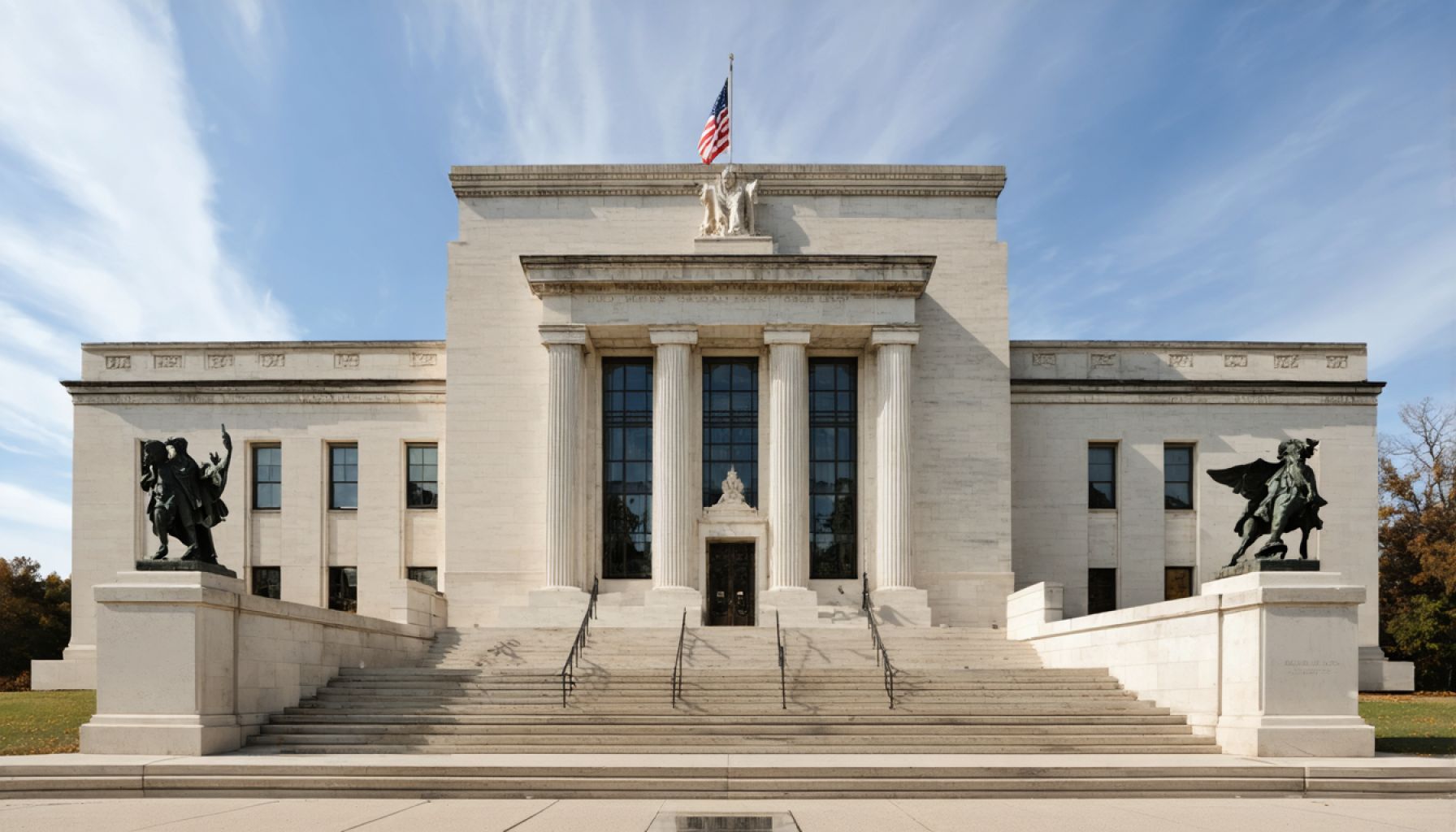- US Treasury yields experienced a significant rise, with the 10-year yield increasing by 10 basis points to 4.34% due to new tariffs, continuing a volatile trend.
- The 30-year Treasury yield also saw a notable increase, climbing 15 basis points to 4.89%.
- Experts advise investors not to panic, predicting that yields may stabilize and decline, with projections of the 10-year yield returning to around 3.5%.
- Inflation is identified as a key factor influencing the yield movements, possibly showing a faster decline than expected, which could stabilize markets.
- HSBC predicts the 10-year yield will reach 3.5% by the year’s end, despite current market volatility.
- Investors are encouraged to be patient, as market corrections and yield changes are part of the financial ecosystem’s evolution.
Amidst a whirlwind of market upheaval that has financial analysts clutching their portfolio reports a little tighter, the US Treasury yields are creating ripples of their own. In a crucial week marked by volatility, the 10-year Treasury yield catapulted by a stark 10 basis points, settling around 4.34% following the latest round of tariffs announced by President Trump. This leap is just the latest episode in a dramatic 47 basis point journey that began Monday with yields as low as 3.87%. Similarly, the 30-year yield continued its upward trajectory, climbing another 15 basis points to an impressive 4.89%.
Turbulent Waters:
The chaos emerging from this financial tempest is nothing short of extraordinary, with long-term yields soaring, not unlike a rollercoaster ride without seatbelts. Experts, however, urge investors not to panic. Mark Newton, a senior strategist at Fundstrat Global Advisors, described the reversal in treasury dynamics as a spectacle unlikely to persist. He predicted that the ascent of Treasury yields might lose steam soon, with the 10-year yield finding its way back down toward a calming 3.5% in the not-so-distant future.
Inflation: The Unseen Puppeteer:
While the current narrative might hint at economic instability or plummeting growth, intricate layers beneath this surface tell a different story. Observations suggest that a slowdown might not be driven solely by faltering economic vigour. Instead, the real protagonist could very well be inflation—slinking downwards at a brisker pace than most have anticipated. This silent adjustment could offer solace to those foreseeing turbulence.
Moreover, HSBC remains steadfast in its prediction, anchoring the expectation of the 10-year yield drifting toward 3.5% by the close of the year. Their analysis implies that despite immediate policy concerns and valuation swings, overarching trends support a gradual decline.
The Takeaway:
In this landscape of unpredictability, marked by soaring yields and policy shifts, investors are advised to embrace patience. Market corrections and yield fluctuations are part of a natural financial evolution. The path forward hinges on inflation’s behavior and fiscal policy directions, which together will sew the tapestry of economic stability in the coming months. Armed with insight and anticipation, investors can weather this storm, steering through today’s tempest towards tomorrow’s calmer seas.
US Treasury Yields: Navigating the Volatility and Opportunities
Introduction to the Current Scenario
In the midst of a turbulent financial landscape, the recent surge in US Treasury yields is drawing significant attention. The 10-year Treasury yield has experienced a remarkable rise, catapulting 47 basis points in just one week. Meanwhile, the 30-year yield followed suit, climbing another 15 basis points. While the immediate reaction might be concern over economic instability, a deeper analysis reveals several key factors at play.
Understanding Treasury Yields
Treasury yields are a critical component of the financial ecosystem, serving as a benchmark for various interest rates, including mortgages and corporate loans. This relationship underscores the importance of recent fluctuations, as they have far-reaching implications on borrowing costs and economic growth.
Inflation and Economic Growth
The interplay between inflation and Treasury yields is complex yet vital. Traditionally, higher inflation expectations lead to higher yields as investors demand more compensation for the anticipated decline in purchasing power. However, recent decreases in inflation may indicate a slower pace than predicted, influencing Treasury yields unlikely to maintain their sharp ascent.
Investor Strategies Amid Rising Yields
1. Diversification: Spreading investments across various asset classes can mitigate risks associated with volatile yields.
2. Focus on Long-Term Goals: Short-term market fluctuations should not deter long-term investment strategies.
3. Monitor Economic Indicators: Keeping an eye on inflation and economic policy changes can offer insights into yield trends.
Market Forecasts and Industry Trends
Several financial institutions, including HSBC, project a potential decrease in 10-year Treasury yields to around 3.5% by the end of the year. This forecast aligns with the belief that current volatility may subside, allowing for a more stable investment environment moving forward.
Controversies and Limitations
1. Predictive Challenges: Forecasting yields is inherently uncertain, with multiple factors influencing outcomes.
2. Geopolitical Factors: Global events, such as trade tensions and international conflicts, can unpredictably impact yields.
Security and Sustainability
Treasuries are typically considered a safe investment, backed by the US government’s creditworthiness. However, sustainability concerning national debt levels and fiscal policies remains a concern for long-term viability.
Pros and Cons Overview
Pros:
– Stable and secure investment backed by the US government.
– Influential benchmark for other interest rates.
Cons:
– Susceptible to inflationary trends and policy shifts.
– Volatile in times of economic or geopolitical uncertainty.
Insights and Predictions for Investors
Given the current situation, investors should remain informed but composed. Monitoring key indicators like inflation, fiscal policies, and global economic conditions can help anticipate yield movements. With thoughtful strategy and attention to trends, navigating this period of volatility can lead to good investment opportunities.
Actionable Recommendations
– Stay informed about economic updates and announcements.
– Review and adjust investment portfolios to align with risk tolerance and long-term goals.
– Consider financial advice to better understand potential impacts and strategies tailored to current market conditions.
For additional insights on investing and economic outlooks, visit Treasury.gov and HSBC.
